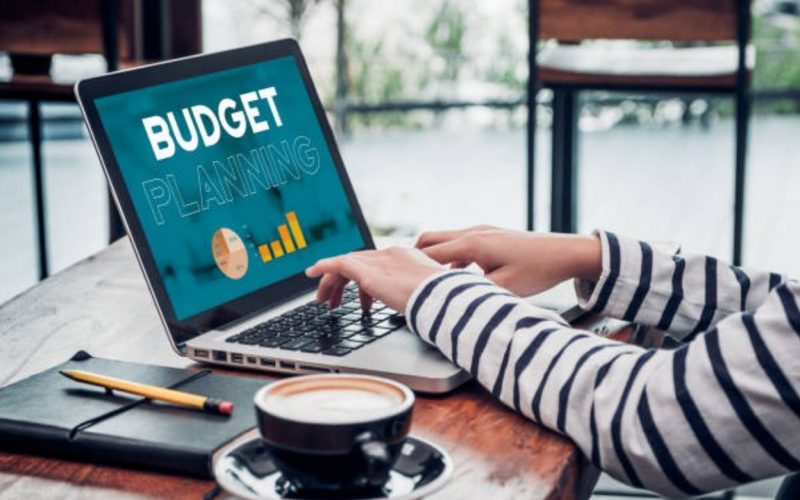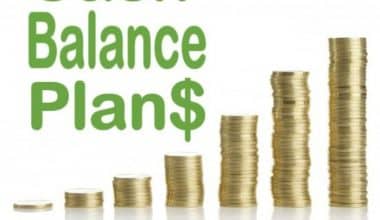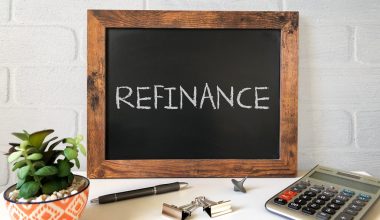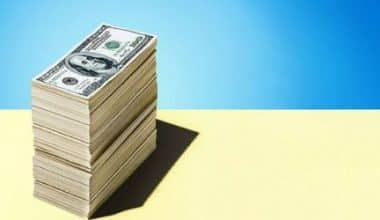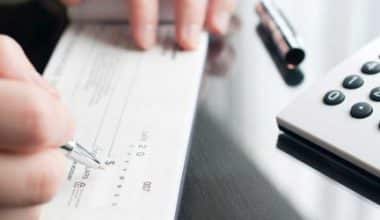You’ll need a budget planner if you want to keep track of your spending and achieve your financial goals. A personal or household budget is a summary of your income and expenses for a specific period, usually one month.
With digital technologies playing an important role in our daily lives, it’s only natural that they’d play a role in money management as well. Consumers can now choose from a variety of robust budgeting apps and budgeting tips to budget and manage their expenditures. In addition to basic planning, these can be changed to send alerts when money is spent, automate savings, and make financial reports.
If you’re always on the lookout for the ideal budget planner, budgeting apps might be just what you’re looking for. There are more amazing cheap app options than ever before, whether you’re looking for an iPhone or Android app.
In this article, we looked at the 15 best budgeting apps for 2023 that will help you achieve financial stability.
What is Budgeting?
Budgeting entails making a plan for how you will spend your money. A budget is a name for this spending strategy. Making a spending plan allows you to know ahead of time if you will have enough money to do the things you need or want to do.
If you don’t have enough money to do everything you want, use this planning approach to prioritize your spending and put your money toward the things that matter most to you. Simply said, budgeting is the process of matching your expenses and income. You’ll have an issue if they don’t balance and you spend more than you earn.
Budgeting ensures that you always have enough money for the things you need and the things that are essential to you since it helps you to set a spending plan for your money. Practicing budgeting or spending plan might also help you stay out of debt or get out of debt if you’re already in it.
Why Should You Make a Budget?
Here are seven reasons why you need a personal budget:
- A budget can assist you in gaining financial control.
- Budgeting assists you in achieving your objectives and financial goal
- Budgeting can help you stay out of debt and boost your credit score.
- It Helps Ensure You Don’t Spend Money You Don’t Have
- It Helps Lead to a Happier Retirement
- Enable You Prepare for Emergencies
- It assists in exposing bad spending habits.
How to Make a Budget
You must first determine what you are already spending, what you can afford to spend, and what your goals are to develop a budget that works for you and allows you to live a comfortable and happy life.
Here are budgeting tips that you can use to make your budget:
- Gather all of your financial documents
- Calculate Your Earnings
- Make a list of all of your monthly expenses.
- Calculate Fixed and Variable Costs
- Add up your monthly earnings and expenses.
- Make Expense Adjustments
Best 15 Budgeting Apps
Our top pick for the best 15 budgeting app is listed as follows:
- Good Budget
- Spendee
- Drop
- Caddle
- Personal Capital
- Wismo
- STACK
- Mint
- KOHO
- Wally Budget App
- YNAB (You Need A Budget)
- Simplifi by Quicken
- HandWallet
- Zeta
- MVelopes
#1. Good Budget
Goodbudget is a budgeting app with free and paid options that will help you achieve financial freedom. The software uses the envelope budgeting method and provides the following features:
- Budgets can be synced and shared among several devices and family members.
- Save money for significant purchases over time and pay down debt.
- Make a budget and keep track of it.
You may use Goodbudget on your computer, Android, or iPhone. The paid subscription costs $6 per month or $50 per year and includes limitless envelopes, device syncing, and 7 years of history.
#2. Spendee
Spendee, like Good Budget, offers a free and premium plan. You may link your bank accounts and see your entire financial picture in one location. It is simple to manually enter the information if you spend cash.
The software gives you a visual snapshot of your finances and helps you create sensible budgets. It allows family members to share information, supports multiple currencies, and notifies you of upcoming bill payments and budget overruns.
Spendee is available in two paid versions: $14.99 and $22.99 each year. The app is compatible with both iPhone and Android devices.
#3. Drop
Drop is a free cashback software that automatically rewards you when you shop at partner merchants using your registered debit or credit cards. It’s available in both Canada and the United States.
Install the Drop app, link your bank account, and start earning money when you shop at your favorite stores.
When you make a purchase, your account is awarded points that you may redeem for Amazon, Starbucks, Gap, iTunes, Cineplex, and other popular gift cards.
#4. Caddle
Caddle is a fantastic shopping cashback app that can be combined with Checkout 51 to maximize your cash-back rewards. Every week, the app features fresh offers that you can purchase at a certain (or any) retailer.
When you have $20 or more in your account, use the app to upload your receipt and payout via check.
Caddle pays you to view commercial advertisements and conduct surveys in addition to product offers.
#5. Personal Capital
While Personal Capital allows you to create and keep a monthly budget, it’s the combination of budgeting, investment tracking, and retirement goal tracking that makes this budgeting tool worth using.
You’ll provide retirement-related information when you join up, such as your age when you want to retire, and how much money you have in your savings and investment accounts. You’ll be able to see a basic overview of where your money is going once you link the accounts you wish to be monitored, such as your checking, savings, and investment accounts. The graphs make it simple to keep track of your monthly expenses and cash flow.
It’s a fantastic money management tool for keeping track of not only where your money goes, but also if you’re on schedule to accomplish your retirement goals and other long-term objectives.
#6. Wismo
Because Wismo is both a social media platform and a budgeting program, you won’t get the complete Wismo experience until your friends and family also use it.
#7. STACK
The STACK Mastercard and app are a free prepaid card that also functions as a cashback, budgeting, and savings app, making it ideal for frequent travellers. Here’s what it has to offer:
- Fees are not charged.
- There are no foreign exchange fees.
- There are no fees for ATM withdrawals.
- Roundups are used to automate savings.
- Free in-app budgeting tool that analyzes your weekly and monthly spending and gives you real-time information.
- Purchases get you money back.
#8. Mint
With over 20 million users, Mint is the most popular free budget planner. The software provides you with a platform to examine all of your financial accounts in one location, allowing you to keep track of your spending and create savings goals automatically.
The Mint app makes budgeting simple and sends you notifications about unexpected charges and upcoming payments.
Are you concerned about the safety of your account? Mint employs the same 128-bit SSL encryption employed by banks.
#9. KOHO
KOHO is a reloadable Visa card and app that may be used as a prepaid debit card, a money-saving app, or a budget planner. It is available on iPhone and Android and is free.
The KOHO budgeting software isn’t like other budgeting apps. It can do a lot more than that, and it can nearly completely replace your bank. In the first three weeks of using the app, the average KOHO user is estimated to have cut their spending by 15% and saved about $500!
#10. Wally Budget App
Wally is a simple personal financial app for iPhones and Android devices. It is completely free and has garnered excellent reviews in several nations. It’s simple to keep track of your costs, scan receipts, create budgets, and set objectives using this app.
In the future, they want to offer an optional premium service (such as currency conversion) for $0.49 to $4.99. For the time being, all of their services are free.
#11. YNAB (You Need A Budget)
YNAB is a premium finance app and budget planner that elevates budgeting to new heights. The app is one of the greatest budget apps for iPhones since it follows four main rules:
Rule 1:
Every dollar should have a job. This is comparable to the cash envelope technique (without the paper envelope), where you designate each dollar to a task in your various spending categories and then carry out your plan throughout the month.
Rule 2:
Accept your true costs. The software assists you in saving for significant and infrequent expenses so that you are not forced to break the bank when calamity hits.
Rule 3:
Take the punches as they come. As you have a better understanding of your spending habits, you may quickly change your budget.
Rule 4:
Make your money grow old with you. Get in the habit of saving and spending less than you earn.
#12. Simplifi by Quicken
Simplifi by Quicken, which debuted in January 2020, is the newest budgeting app on the block, but its unique features, notably around cash-flow management, make it a worthwhile addition to our list.
Simplifi, like many other budgeting apps, lets you sync and view all of your financial accounts in one spot. It will send you reminders about upcoming invoices and mark major expenditures. It earns bonus points, though, for generating a tailored spending plan for each user based on their income and expenses, which indicates how much money they have left to spend (or save) at any given time.
#13. HandWallet
HandWallet is a free budgeting app with more complex features that helps with budgeting. Individuals and professionals who want to manage their own money with a fluid and simple interface and a variety of advanced capabilities will find it useful. This budget tool requires manual entry of financial transactions.
#14. Zeta
Zeta is a budgeting app that is tailored to couples. Zeta consolidates all of your personal and joint finances in one place and allows you to hide certain financial details from your partner. It’s a wonderful choice for married couples who want to keep their finances separate or for people who prefer to bank independently.
You can set personal and shared financial objectives with Zeta. The app will give you monthly reminders to create “money dates,” making it a useful tool for learning how to converse about money.
#15. Trim:
Trim examines your bills and spending habits to show you where you may save money in your budget. Bill Negotiation is Trim’s most distinctive function; it examines your internet, phone, cable, and wireless bills to see if you can get the same service with the company at a lesser price. This function might save you hundreds of dollars over the course of a year, which you can put toward other costs, save, or invest.
Household Budget Planner
The best household budget planner is one you can live with, so make adjustments as necessary. The 50/30/20 breakdown, for example, is a suggestion to get you started. Make necessary adjustments to your spending until you reach your optimum budget.
If a physical worksheet isn’t your thing, try one of these budgeting apps. The majority of them connect to your bank accounts so that they can track and categorize your expenses for you. Determine the most critical goals you wish to attain that will necessitate the expenditure of funds. Make a list of 3-5 financial goals and priorities that you want to attain, such as saving 10% for a down payment on a home in 5 years.
Online Budget Planner
You may use an online budget planner to see exactly where your money is going and how much you have coming in. Knowing where every pound goes is a terrific place to start when it comes to achieving financial independence.
A budget planner on the internet can assist you by providing you with: a place to keep track of all your expenditures so you don’t forget anything; a summary of your finances by category; and, when you’re finished, personalized recommendations.
Budget Planner Template
Having a budget in place is an important first step, whether you handle your funds at work or at home. A budget is important to figure out where you’re currently spending money, where you can save money, and where you’d like to put it.
While the prospect of setting a budget can be overwhelming, adopting a budget template can make the process go more smoothly. How will you know which template is best for your needs when there are so many to choose from? There are some excellent Excel templates that can assist you with your budget planner. Check out the best budget planner template.
How Do You Create a Budget Planner?
Follow these guidelines to put together a workable budget.
- Determine your after-tax cash flow.
- Don’t lose track of your money.
- Establish objectives that are within your reach.
- Get creative and figure out what you want to do.
- Cut back on unnecessary expenditures.
- Don’t forget to check in on your financial plan on a regular basis.
Is there a Budget Template in Excel?
The Excel spreadsheet is a useful tool for keeping tabs on your monthly income and expenditures. Simply plug in your expenses and revenue, and the calculator will do the rest, allowing you to anticipate and prepare for any surpluses or deficits.
Do it yourself with the blank personal budget
Conclusion
The most useful budget app for 2023 is the one you’ll use. You can check out a few different applications until you find one that has all of the features you require. Here are some suggestions: Use free trial periods to your advantage, Take advantage of the free trial period to see how well each app performs, also, select an app that works with your device.
FAQs about the Budget Planner 2023
Where can i buy budget planner?
You can buy a budget planner online by subscribing to one of the numerous budgeting apps available for personal budget
How create budget planner?
- Gather all of your financial documents
- Calculate Your Earnings
- Make a list of all of your monthly expenses.
- Calculate Fixed and Variable Costs
- Add up your monthly earnings and expenses.
- Make Expense Adjustments
What is the best budget planner?
The best budget planner is the one that best suits your financial goal. You can always choose from one of the following tools:
- budget sheet
- budget spreadsheet
- budget maker online
- budgeting apps
How to use budget planner?
- Choose a budget sheet and a time frame for your budget.
- Compile a list of your income and assets.
- Gather your expenses into two categories: spending and bills.
- Fill in the figures for your savings, investments, and debt.
- To Make Sure You’re in the Positive, Subtract…
- If necessary, rework…
- Keep an eye on the percentages you’re working with.
Is budget planner a good investment?
A budget planner is a good investment because it helps to optimize your personal finance goal.
